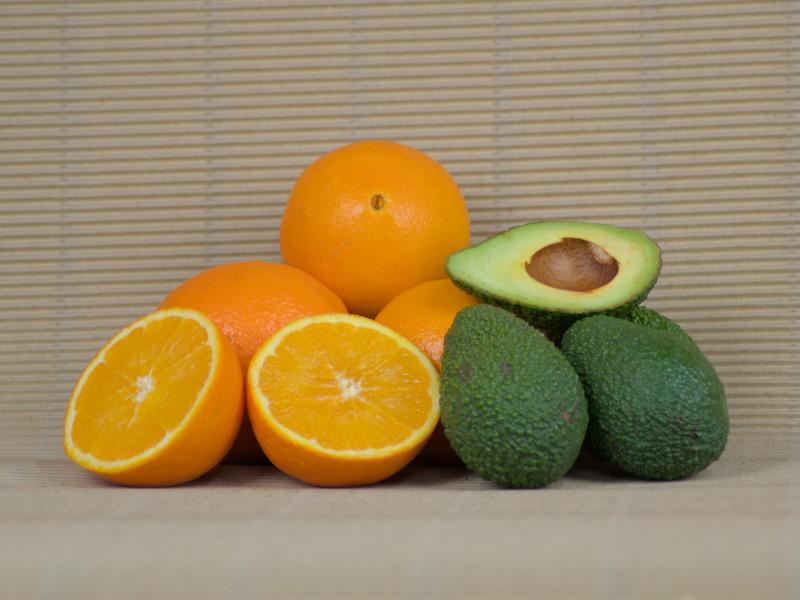Naranja València Late
Es la variedad de naranja más tardía que se produce en València y posiblemente la más extendida a nivel mundial.
Pertenece a la familia de las naranjas Blancas. De tamaño mediano, forma achatada, piel lisa de poco espesor y
color naranja pálido. A diferencia de la familia Navel, no tiene ombligo. Es una naranja muy jugosa y dulce, con
un grado más de acidez que la Lanelate y un sabor muy bueno. Puede presentar alguna semilla. Produce gran cantidad
de zumo, aunque también se puede tomar como naranja de mesa. La pulpa de estas naranjas es fuerte y compacta.
Tiene una larga duración post recolección de hasta 30 días, o incluso más, si se guarda en un lugar fresco, seco
y alejado de la luz directa del sol.
Su período de recolección va desde mediados de abril a finales de mayo.
Hass Avocado
GENERAL DESCRIPTION:
The Hass avocado is a large fruit with an average weight ranging from 200 to 350 grams.
When the fruit is ripe, the skin is rough, dark purple to nearly black, and yields to gentle
pressure. The flesh is green with whitish or yellowish tones, with a flavor similar to nuts,
and a single round and large seed in the center. This variety is larger than the Hass avocado
and is harvested later, between March and July.
CALIBER:
The average caliber of this variety is usually large, with the majority of pieces measuring
above 70 mm at their widest part.
DURABILITY:
It is harvested when it reaches an appropriate size and ripens 10 to 12 days after
being harvested. If you want to accelerate the ripening of some of them, a good trick
is to place an apple nearby.
Once ripe, it is best preserved in the refrigerator, where it can remain in good
condition for approximately one week.
DISADVANTAGES:
Once ripe, it does not last more than a week in the refrigerator.
Conventional farming
These fruits come from conventional farming, which means they may have
received conventional treatments during their production. Once harvested,
they are only cleaned with a cloth before being marketed. No waxes, fungicides,
or other preservatives are added to them. The treatments applied by
our farmers exclusively use products authorized by the EU. Nevertheless, a
significant portion of the fruits we serve comes from orchards that have
not received any pesticide treatments.
